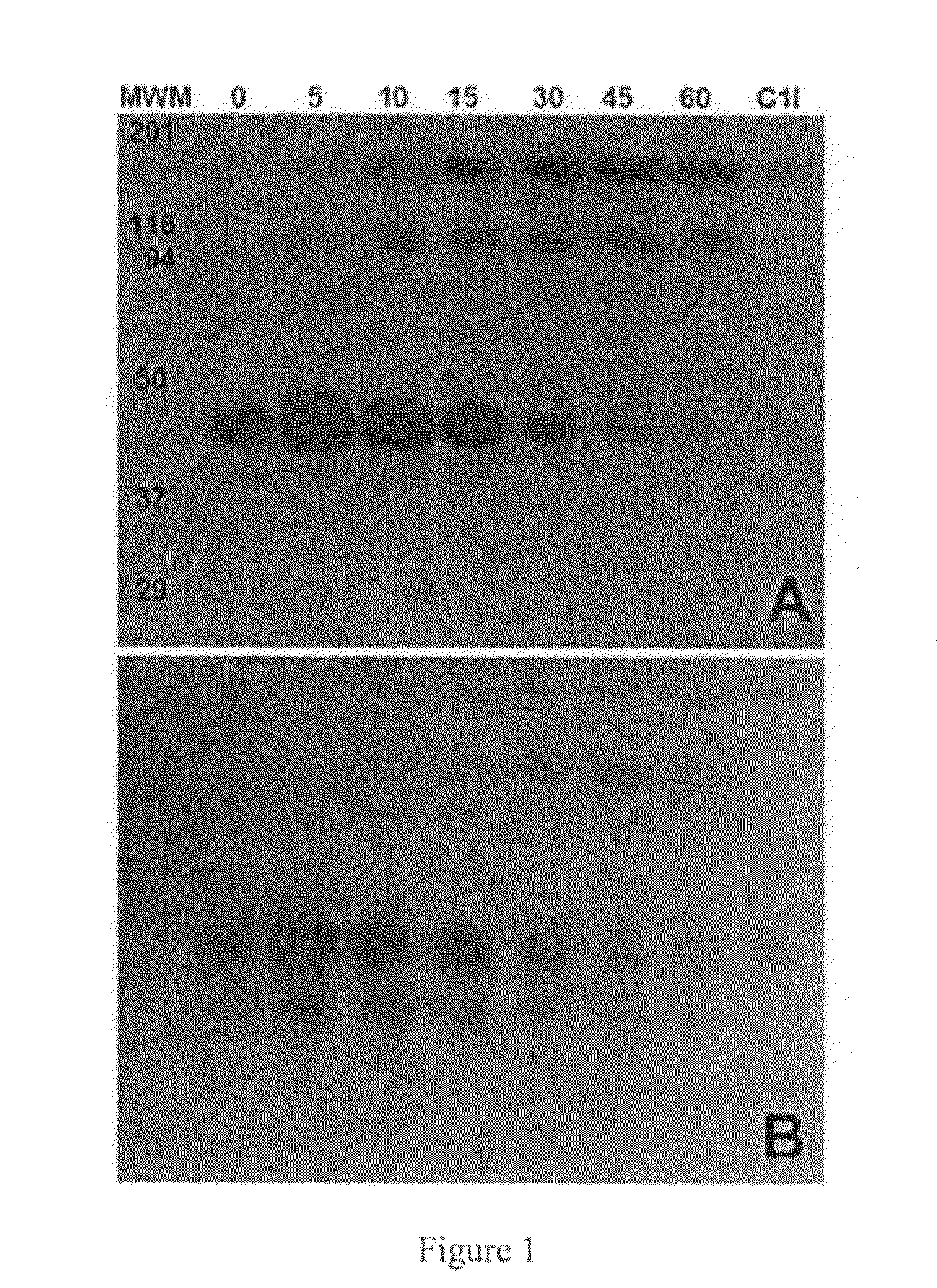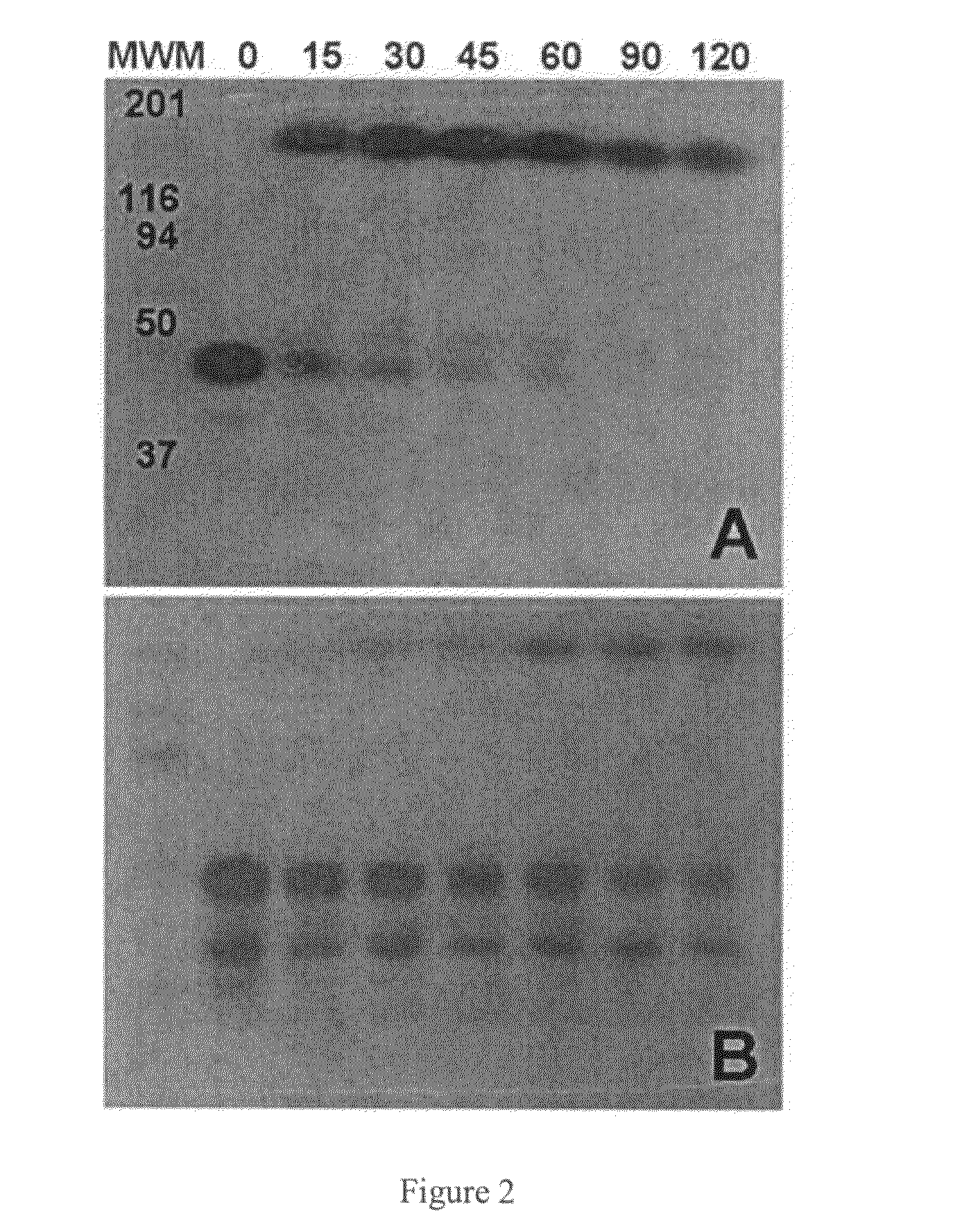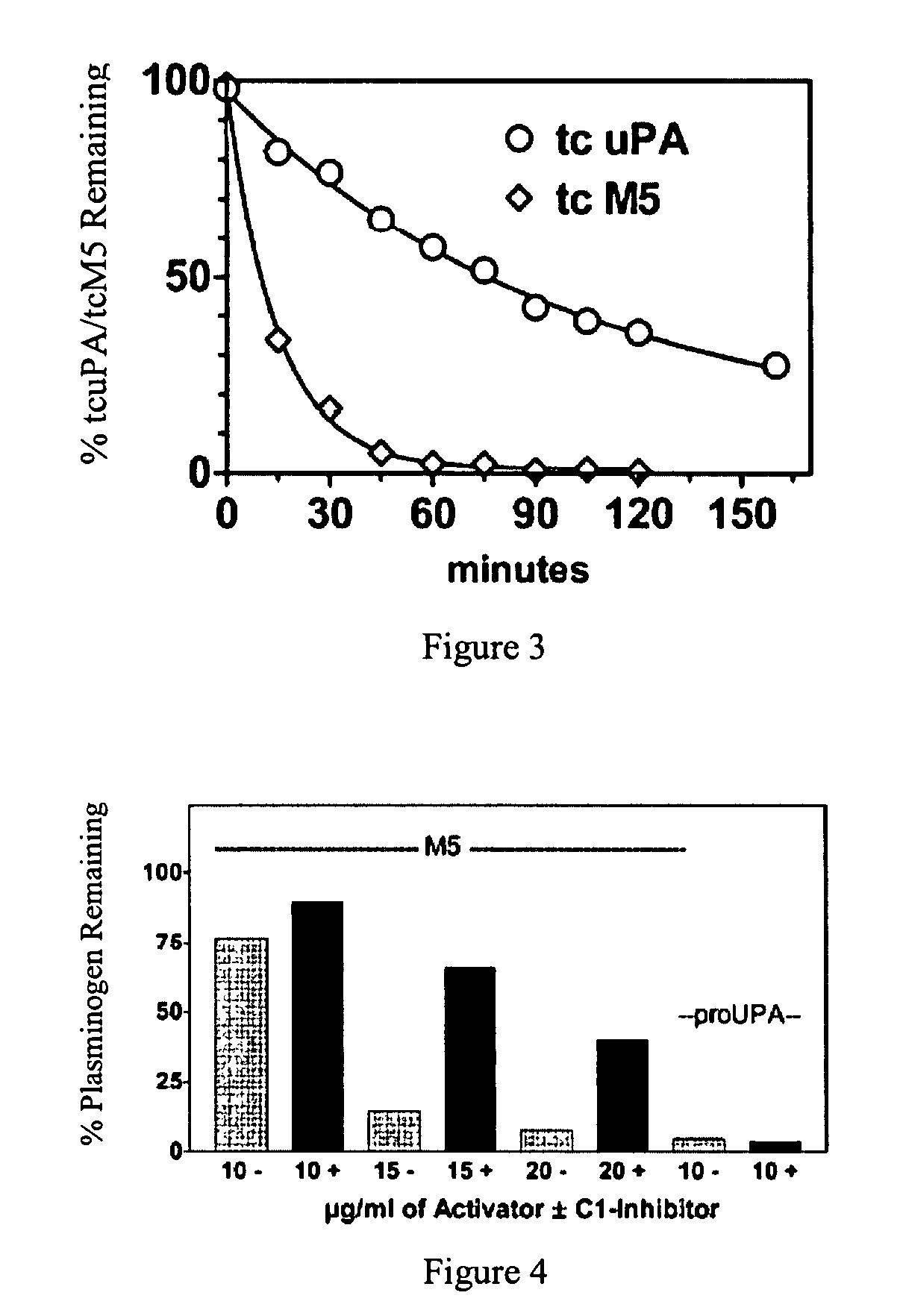C-1 inhibitor prevents non-specific plasminogen activation by a prourokinase mutant without impeding fibrin-specific fibrinolysis
a prourokinase and mutant technology, applied in the field of thrombolysis, can solve the problems of serious impairment of proupa in clinical trials, unstable proupa in plasma, etc., and achieve the effect of restoring stability of m5, no attenuation of fibrinolysis rate, and high catalytic activity
- Summary
- Abstract
- Description
- Claims
- Application Information
AI Technical Summary
Benefits of technology
Problems solved by technology
Method used
Image
Examples
Embodiment Construction
[0023]The present invention relates to a novel method of reducing bleeding during fibrinolysis treatment and improving the rate of clot lysis. The method is based on the discovery that C1-inhibitor has the ability to inhibit plasminemia by inhibiting the two-chain prourokinase plasminogen activator mutant tcM5. The inhibition rate of this interaction is sufficient to prevent non-specific plasminogen activation but not fibrin-specific plasminogen activation.
[0024]ProuPA is a thrombolytic drug with the undesirable side effect of being vulnerable to spontaneous activation in plasma during therapeutic fibrinolysis. M5 is a single site mutant of prouPA developed to limit this non-specific effect and thereby to make fibrinolysis more fibrin-specific and to allow the physiological properties of prouPA to be retained at therapeutic doses. The plasminogen activator, M5, differs from the primary sequence of prouPA by a single amino acid substitution at position 300, where the amino acid Lysin...
PUM
| Property | Measurement | Unit |
|---|---|---|
| concentrations | aaaaa | aaaaa |
| concentrations | aaaaa | aaaaa |
| concentration | aaaaa | aaaaa |
Abstract
Description
Claims
Application Information
 Login to View More
Login to View More - R&D
- Intellectual Property
- Life Sciences
- Materials
- Tech Scout
- Unparalleled Data Quality
- Higher Quality Content
- 60% Fewer Hallucinations
Browse by: Latest US Patents, China's latest patents, Technical Efficacy Thesaurus, Application Domain, Technology Topic, Popular Technical Reports.
© 2025 PatSnap. All rights reserved.Legal|Privacy policy|Modern Slavery Act Transparency Statement|Sitemap|About US| Contact US: help@patsnap.com



